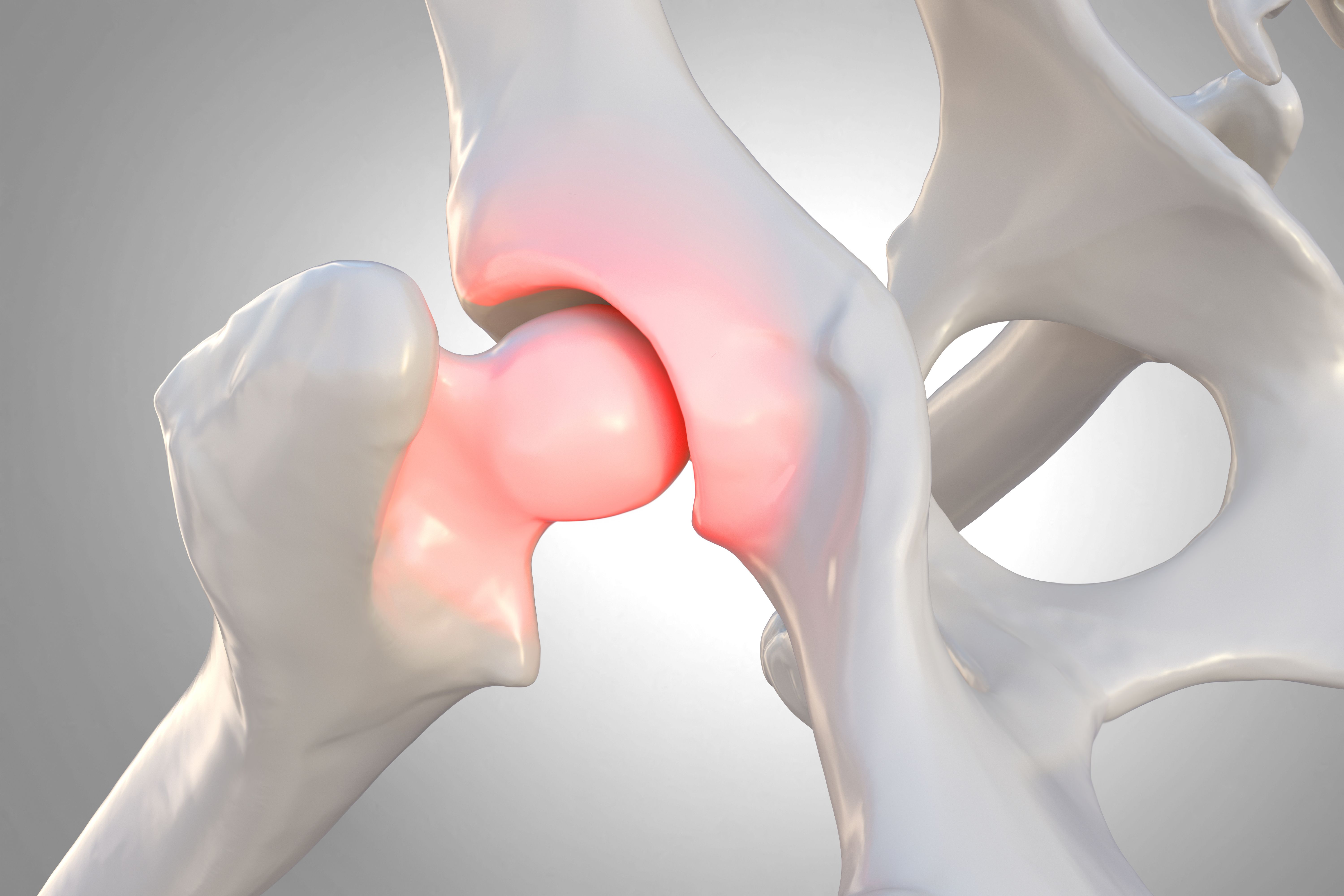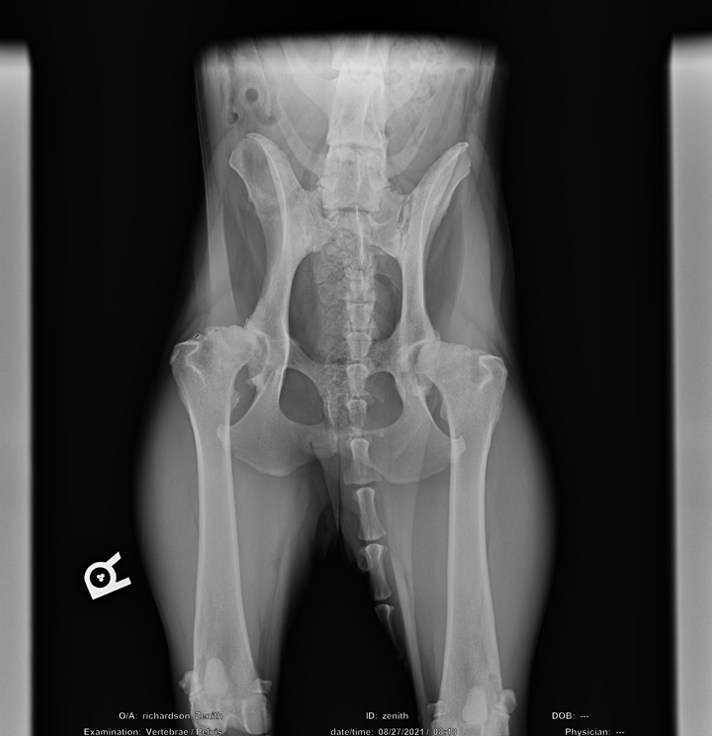The nuts and bolts of canine hip dysplasia
Veterinary experts offer invaluable advice on helping patients manage this painful condition
Monika Wisniewska / stock.adobe.com

Hip dysplasia is a deformity of the hip occurring when the ball (head of the femur or thighbone) and the socket in the pelvis (acetabulum) do not develop in unison during puppyhood, resulting in laxity of the joint and then degenerative joint disease or osteoarthritis (OA).1 Canine hip dysplasia is an inherited condition, but there are environmental risk factors as well, according to Selena Tinga, DVM, PhD, DACVS-SA, an assistant professor in the Section of Small Animal Surgery at Cornell University College of Veterinary Medicine, in a dvm360® interview.
“The inheritance [of hip dysplasia] is very complex, there are...many, many, many genes involved in the predisposition, and then simply being predisposed genetically does not necessarily mean that an animal shows the phenotype, or the clinical signs associated with it,” Tinga explained.
Some other risk factors of canine hip dysplasia include obesity and lack of sufficient exercise, said Matthew Brunke, DVM, DACVSMR, CCRP, CVPP, CVA, medical director at Veterinary Surgical Centers Rehabilitation in Vienna, Virginia, in a dvm360® interview. Tinga added that overnutrition, growing too fast, and, potentially, calcium supplementation or early spaying and neutering may promote development of the clinical disease as well.
Why certain breeds may be at higher risk
Hip dysplasia is often associated with large and giant, fast-growing breeds (eg, German shepherds, Newfoundlands, Labradors, golden retrievers, and Bernese mountain dogs), who have genes linked to the condition. However, the condition is not exclusive to bigger dogs. In fact, Tinga suggested that hip dysplasia may not even be more prevalent in larger breeds, although they present clinical signs more frequently.
“I wouldn’t say large and giant breed dogs are the only ones affected or even necessarily more affected; they probably are, [but] we just don’t have the numbers to say that,” she said. “I think [smaller breeds] tolerate the instability and the osteoarthritis better, and so we don’t diagnose it very commonly as a clinical problem.”
Another reason giant and large breed dogs are known for having hip dysplasia could be because surgical treatment, such as a femoral head ostectomy (FHO), is more complicated in these dogs than in smaller ones. They require a lot more care postoperatively to have a moderate or good outcome, Tinga added, “because large and giant breed dogs are so clinically affected by it and because we don’t have an easy surgery to provide them comfort; that’s why we just invest in and focus on them more.”
Early detection is key
Advanced osteoarthritis

Early screening is important to detect hip dysplasia in young dogs, especially because a dog may not show signs of the condition. Brunke said, “When a dog’s hip hurts, it just keeps walking. But it just doesn’t want to walk as much, so it lies down [and] we think it’s lazy.... It can be super subtle, in trying to [hide its discomfort] early on.” He recommends that veterinarians perform a PennHIP x-ray, especially in dogs at risk, which measures how loose a dog’s hips are. “It’s through a set of distracted and compressed x-rays that have to be done under sedation,” Brunke continued.
If veterinarians do find hip laxity in puppies under 5 months old, there are surgical interventions where the hip doesn’t have to be replaced, including a juvenile pubic symphysiodesis (JPS). “[JPS] is where we fuse the growth plate of the pubis. That allows us to get better coverage [on the femoral head] that helps those hips grow,” Brunke explained. Tinga said that JPS helps slow the development of OA and can even prevent dogs from needing more complex surgeries later in life.
For juvenile dogs slightly older than 5 months, additional surgical options include double pelvis osteotomy (DPO) and triple PO (TPO). These procedures consist of osteotomies of the pelvis to promote rotation of the acetabulum and enhanced acetabular coverage of the femoral head.2 Dogs with hip dysplasia that are good candidates for a DPO or TPO are those ideally aged 8 to 10 months and that do not have visible radiographic arthritic changes.3
Management and treatment options
For dogs diagnosed with hip dysplasia later in life, medical management is the most common modality. This can be done through a balanced diet and exercise to maintain a healthy weight. Tinga noted, “[For] any dog with orthopedic disease, getting them down to a good body condition and then doing controlled, regular—meaning daily low-impact—activities is really good for strengthening, but not having concussive forces across joints with orthopedic disease.”
Post total hip replacement

For temporary relief, dogs can also take nonsteroidal anti-inflammatory drugs (eg, carprofen and meloxicam), joint supplements (eg, those containing omega-3 fatty acids, undenatured type II collagen, etc), or joint injections. Another excellent way to help patients manage hip dysplasia is with rehabilitation therapy. “That can be things like phytoceuticals, laser therapy, shock wave therapy, and good exercise, [such as] with underwater treadmills,” Brunke said.
If, after using all these modalities to address the pain, dogs are still showing clinical signs for hip dysplasia, Tinga said that is when you may consider advanced surgical options, such as a total hip replacement or FHO. According to Brunke, hip dysplasia is “one of the few diseases we can absolutely cure in veterinary medicine” through a total hip replacement. “Then there’s no painful arthritis. It’s a perfectly tight joint. It has implants that are going to hold up for the life of the pet, and they can be much more comfortable because they use the leg the way it was designed to be used,” he added.
On the other hand, an FHO, Tinga said, “is harder to recover from for large breed dogs. So it’s not usually our top choice for treating hip dysplasia. Because it’s such a final thing once you do it, that’s the leg the dog has.”
Takeaways
Tinga noted that it is important to familiarize yourself with the treatments local veterinary surgeons offer and their general guidelines for intervention, so you can easily refer patients who present with canine hip dysplasia. She also reemphasized determining a nutrition and weight loss program for an affected patient. Both Brunke and Tinga agreed that dogs suffering from hip dysplasia should be removed from the breeding pool to prevent future dogs from inheriting the condition.
Brunke concluded by encouraging veterinary professionals to be good advocates for patients. You can catch hip dysplasia in early stages, but also catch it when the pet is older and there are still excellent options, he noted. “Age is not a disease, so we don’t have to give up on them; we still have a lot of good ways [in which] we can help,” Brunke said.
References
- Hunter T, Ward E. Hip dysplasia in dogs. VCA Animal Hospitals. Accessed September 26, 2022. https://vcahospitals.com/know-your-pet/ hip-dysplasia-in-dogs
- Double pelvic osteotomy (DPO): for the treatment of canine hip dysplasia. DePuy Synthes Vet. Accessed September 27, 2022. https://jjmdanimalhealth. com/sites/default/files/2020-12/DSUSVET09140027_DPO_TPO_brochure.pdf
- Canine hip dysplasia. American College of Veterinary Surgeons. Accessed September 27, 2022. https://www.acvs.org/small-animal/ canine-hip-dysplasia
